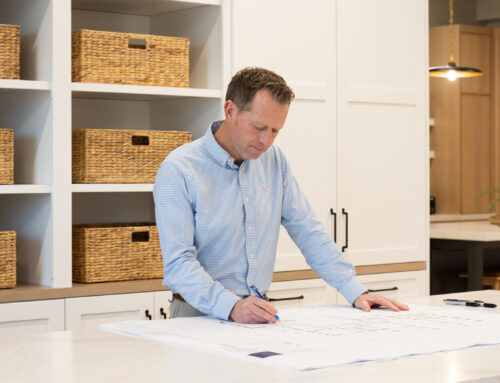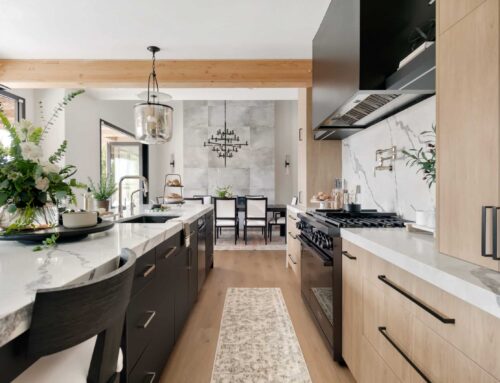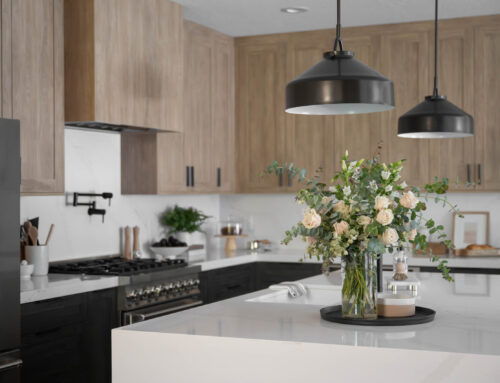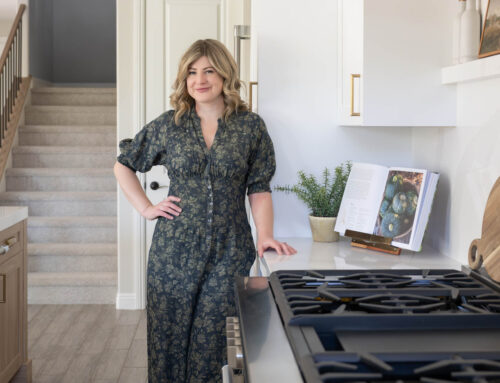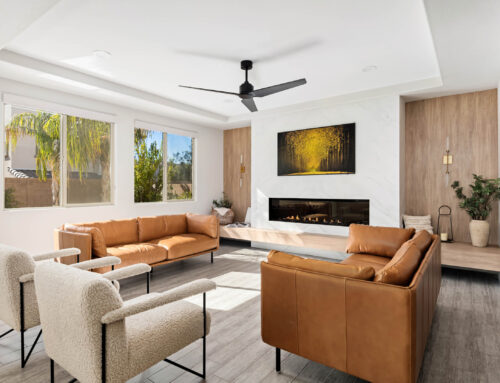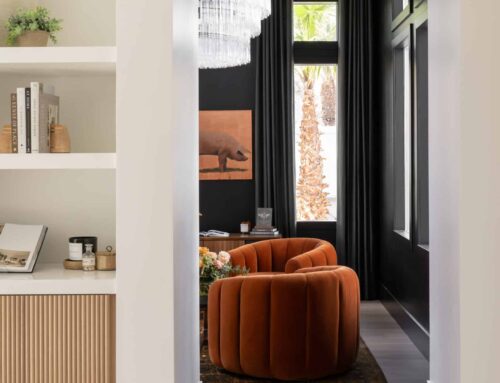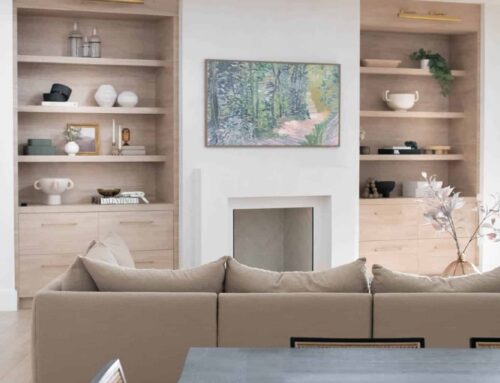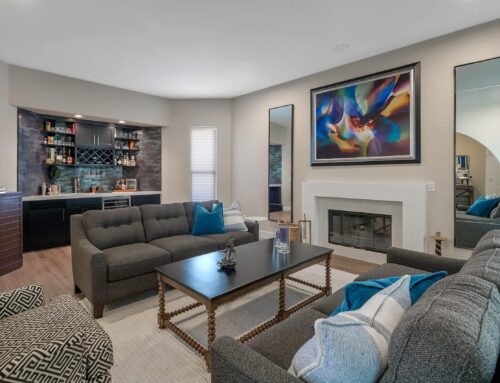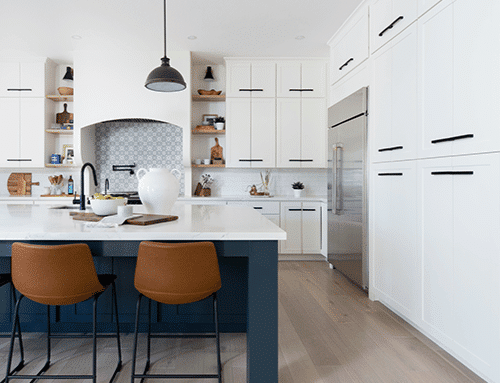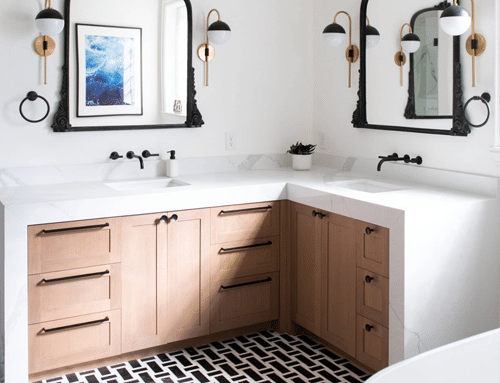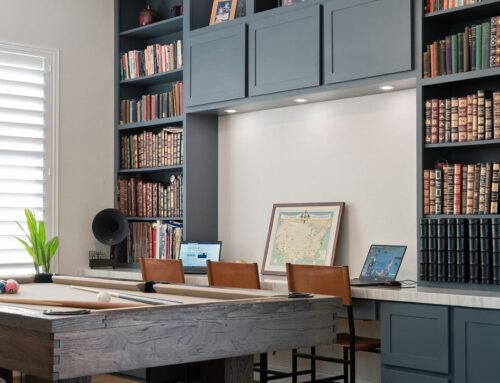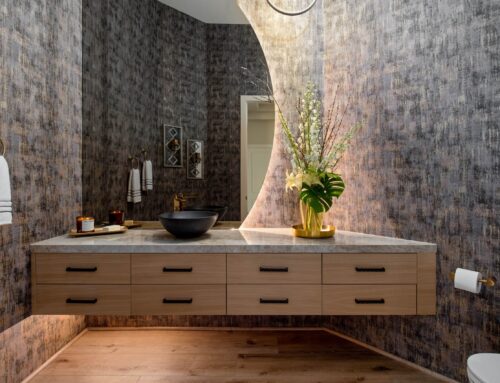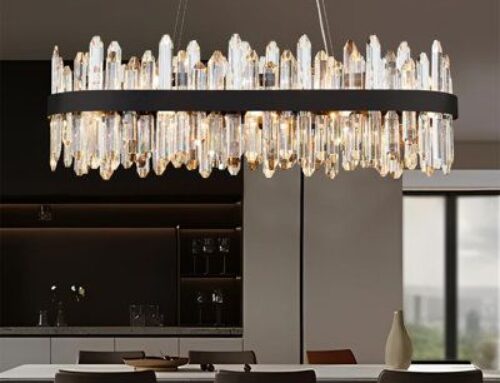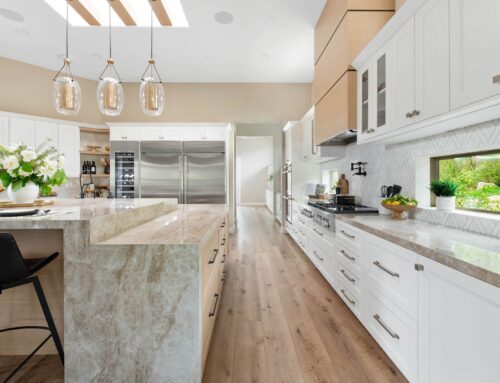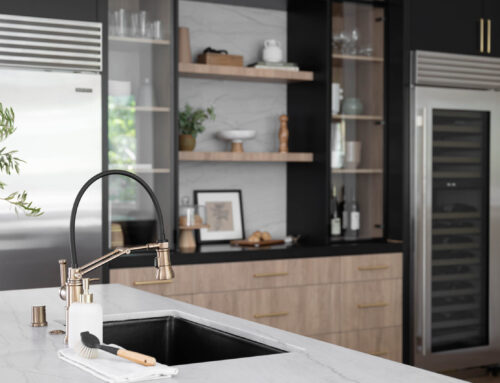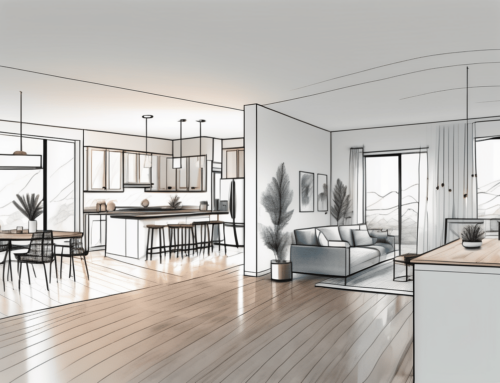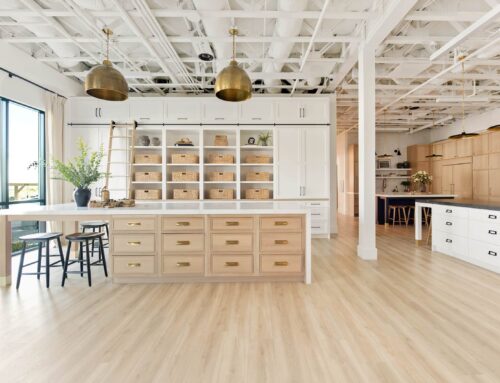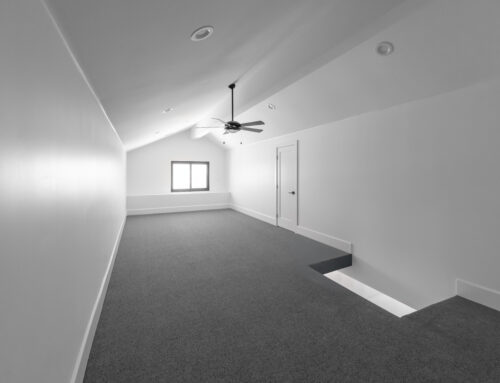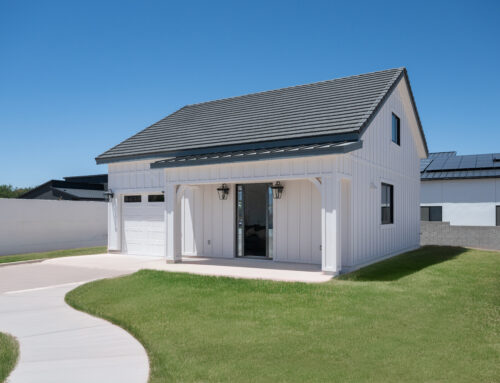Minimalist Living Room Ideas for a Clean and Clutter-Free Space
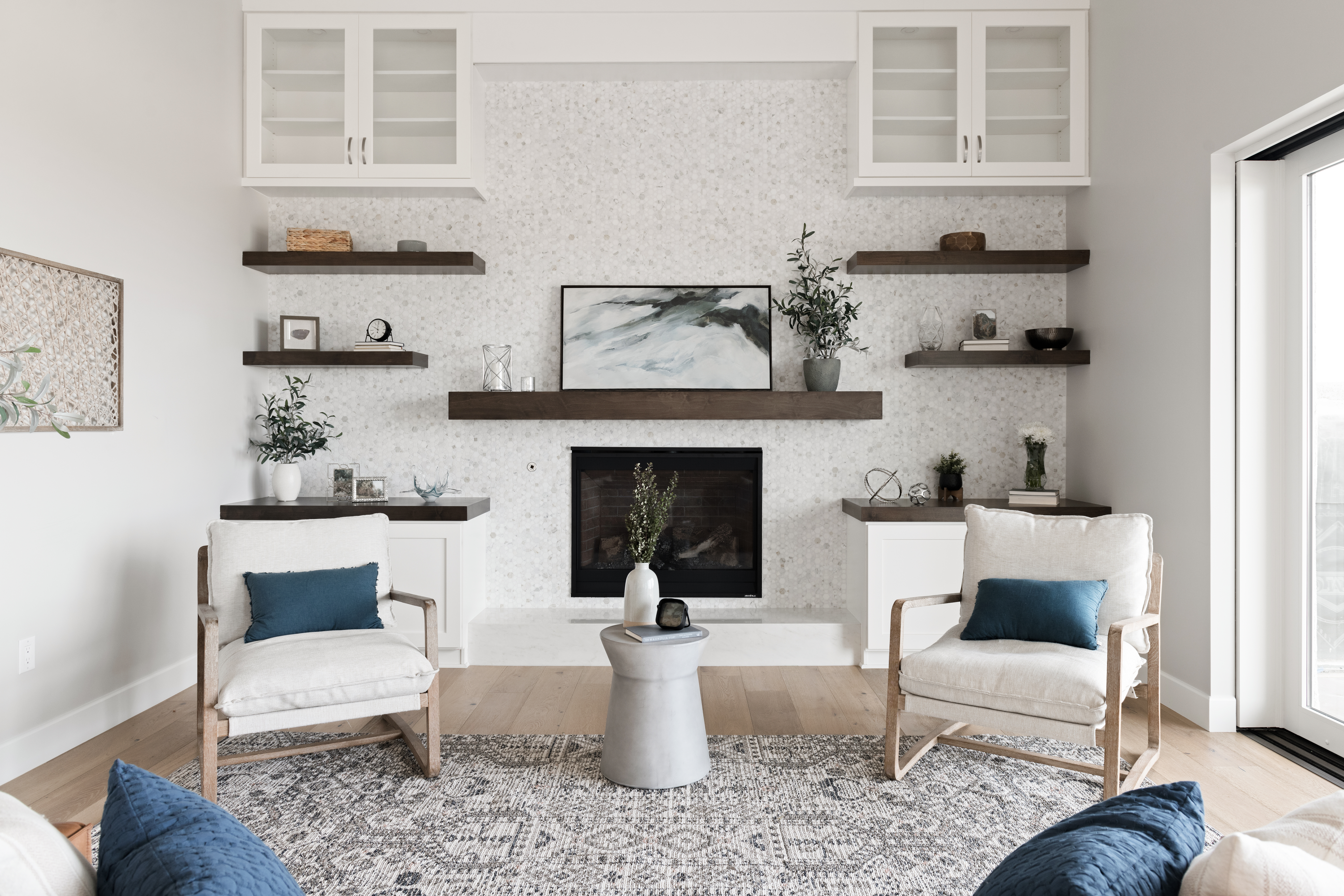
The key to achieving a minimalist living room is understanding the key elements of minimalism, implementing new ideas to achieve functionality, and maintaining a minimalist lifestyle.
Minimalism has become a hallmark of contemporary interior design, offering a blend of simplicity, elegance, and functionality. Minimalist design provides a compelling solution for those seeking to transform their living rooms into serene, clutter-free spaces.
In this blog, we will explore the essential elements of minimalism and several minimalist living room ideas to help you create a tranquil and clutter-free space that enhances your well-being. You'll discover practical tips that beautify your space and promote a stress-free lifestyle.
Understanding Minimalism in Interior Design
Minimalist design transforms living rooms by emphasizing simplicity, functionality, and high-quality materials to create serene and clutter-free spaces.
Minimalism is an approach to design that emphasizes simplicity and the removal of unnecessary elements. It's about creating spaces that are functional, clean, and free from clutter. It champions using neutral color palettes, simple forms, and high-quality materials.
Living in a minimalist space creates a calming environment, reduces stress, and enhances focus. In high-end living spaces, minimalism can elevate the sense of luxury and sophistication by highlighting the quality and craftsmanship of each element.
Key Elements of a Minimalist Living Room
The main elements of minimalism are functionality, simplicity, and prioritizing quality over quantity.
Focus on Functionality
In minimalist design, every piece of furniture should serve a purpose. Multifunctional furniture, like a sofa that doubles as a guest bed or a coffee table with hidden storage, is ideal for maintaining a clean and practical space.
The Power of Simplicity
Clean lines and unadorned spaces are central to minimalism. Avoid overly ornate furniture and choose pieces with simple, elegant shapes. This creates a sense of order and openness in the living room.
Quality Over Quantity
Investing in high-end, durable pieces is essential. Minimalism emphasizes fewer items, but each should be of exceptional quality. Think of a single, luxurious leather sofa or a finely crafted wooden coffee table.
Minimalist Living Room Ideas for Your Home
Minimalist design uses neutral colors, natural materials, and smart storage solutions to create a functional, aesthetically pleasing, and clutter-free living room.
Neutral Color Palette
Neutral colors like whites, grays, and beiges create a calming and expansive atmosphere. These colors also serve as a perfect backdrop for highlighting quality furniture and decor pieces. They are also versatile, allowing for easy updates and seasonal changes.
Using Textures
Neutral colors like whites, grays, and beiges create a calming and expansive atmosphere. These colors also serve as a perfect backdrop for highlighting quality furniture and decor pieces. They are also versatile, allowing for easy updates and seasonal changes.
Essential Furniture Pieces
Choose essential pieces that fulfill multiple roles. A minimalist living room might include a sleek sofa, a simple coffee table, and a few accent chairs. Each piece should contribute to the overall functionality and aesthetic of the room.
Furniture Arrangement
Arrange furniture to promote easy movement and a sense of openness. Avoid cluttering the space with too many pieces. Instead, create a layout that allows for clear pathways and a comfortable, inviting environment.
Built-in Storage Solutions
Utilize built-in storage solutions to keep clutter out of sight. Cabinets, shelves, and hidden storage compartments can maintain a clean look while providing ample space to store everyday items. Choose storage that can seamlessly integrate with the room's design.
Incorporating Art and Decor
Use decor sparingly to enhance, not overwhelm. Subtle touches like a textured throw, a minimalist clock, or a few decorative books can add interest without cluttering the space. A single large painting or a well-placed sculpture can make a significant impact.
Integrating Greenery
Plants are a perfect addition to minimalist spaces. They add color and life without overwhelming the design. Plants also improve air quality and can create a sense of tranquility. Opt for a few well-chosen plants, such as a tall fiddle leaf fig or a few small succulents.
Importance of Natural Light
Maximize natural light to create a bright and airy atmosphere. It also accentuates the minimalist decor, highlighting the room's simplicity. Use sheer curtains or no window treatments to allow light to flood the room. Large windows or glass doors can enhance this effect.
Minimalist Lighting Fixtures
Choose lighting fixtures that complement the minimalist aesthetic. Simple pendant lights, floor lamps with clean lines, or recessed lighting provide the necessary illumination while maintaining the minimalist look.
Creating Ambiance
Use lighting to create a warm and inviting ambiance. Layer different types of lighting, such as ambient, task, and accent lighting, to add depth and functionality to the living room. Incorporating dimmers and other lighting solutions can allow for flexible control over the mood.
Smart Storage Solutions
Built-in cabinets and shelving can keep items organized and out of sight. Incorporate hidden storage to keep the living room clutter-free. Furniture with secret compartments, such as ottomans or coffee tables, can store items like blankets, magazines, or remote controls.
Organizing Tips
Use storage boxes, baskets, and trays to keep items tidy. Label storage areas to ensure everything has a designated spot. Keep the labels clear and consistent. Group similar items together to make it easier to find and store items efficiently.
Minimalist Technology Integration
Keep technology discreet to maintain clean lines. Use built-in speakers, wall-mounted TVs, and hidden charging stations to avoid clutter. Manage cables effectively to reduce visual clutter. Use cable organizers, conduits, or wireless solutions to keep cords out of sight.
Accessories and Accents
Choose accessories that serve a purpose and fit the minimalist aesthetic. Clocks, vases, and trays should be simple yet elegant. Select mirrors with clean lines and minimal frames that can enhance the space by reflecting light and creating a sense of openness.
Sustainable Minimalism
Incorporate eco-friendly materials and sustainable practices. Choose furniture made from reclaimed wood, organic textiles, and low-VOC finishes. Look for certifications like FSC for wood products and GOTS for textiles. Sustainable living can promote a healthier home.
Creating a Focal Point
A minimalist focal point can anchor the room without cluttering it. Choose a statement piece, such as a fireplace, a large window, or a standout piece of furniture. Examples include a sleek fireplace, a panoramic window view, or a striking piece of art.
Defining Spaces
Create zones within the living room to serve different functions, such as a reading nook, a media area, or a workspace. Use rugs, lighting, and furniture placement to delineate these areas within the living room. This can create a more organized and functional space.
How to Maintain a Minimalist Living Room
A minimalist living room is maintained through regular decluttering, daily habits, family involvement, scheduled cleaning, mindful purchasing, designated storage, and flexibility to adapt to changing needs.
Regular Decluttering Tips
Regularly declutter to keep the space clean. Set a schedule to go through your items monthly or quarterly, deciding what to keep, donate, or discard. This habit ensures that your living room remains free of unnecessary items.
Adopt Daily Habits
Adopt daily habits to maintain minimalism. Make it a routine to clear away any clutter at the end of each day. Ensure that items used daily, such as remote controls, magazines, and throws, have designated storage spaces.
Involve the Family
Involve the whole family in maintaining the minimalist space. Establish shared routines and responsibilities to keep the living room tidy. Encourage each family member to pick up after themselves and respect the clean, clutter-free environment.
Scheduled Cleaning Routine
Establish a weekly cleaning schedule to ensure the space remains tidy. Regular cleaning prevents dirt and clutter from building up. Set aside time each week to dust surfaces, vacuum floors, and organize storage areas.
One In, One Out Rule
For every new item brought into the living room, remove one existing item. This practice helps maintain balance and prevents clutter from accumulating. It encourages mindful purchasing and thoughtful decision-making about what items are truly necessary.
Seasonal Reviews
Periodically assess and declutter the space each season to keep it fresh and minimal. Evaluate your living room decor and furniture to ensure everything still serves a purpose and fits the minimalist aesthetic. Donate or store away seasonal items that are not in use.
Mindful Purchasing
Be intentional with new purchases, ensuring they align with the minimalist aesthetic and serve a purpose. Avoid impulse buys and opt for high-quality, multifunctional items that add value to your living room.
Designated Storage Areas
Assign specific storage spots for all items to prevent clutter from accumulating. Use labeled bins, baskets, and shelves to organize belongings. Ensure that everything has a designated place, making it easier to maintain order.
Digital Declutter
Keep electronics and digital devices organized and free from unnecessary cords and accessories. Use cord management solutions to hide wires, and regularly delete unused apps and files from your devices.
Minimalist Mindset
Adopt a minimalist mindset in daily life, focusing on simplicity and functionality. Embrace the principles of minimalism beyond your living room, applying them to other areas of your home and lifestyle.
Rotating Decor
Use a rotation system for decorative items to keep the space dynamic without overcrowding it. Change out decor seasonally or whenever you feel the need for a fresh look, storing away items not currently in use.
Regularly Update Storage Solutions
Assess and improve storage solutions as needed to ensure they continue to meet your needs. As your lifestyle changes, adapt your storage to keep your living room functional and organized. Staying updated with the latest storage innovations can help maintain the minimalist aesthetic.
Maintain Clear Surfaces
Keep surfaces like coffee tables and shelves clear, using trays or organizers for any necessary items. Clear surfaces contribute to the minimalist look and make the room feel more spacious and orderly.
Minimalist Media Consumption
Limit the number of books, magazines, and media items in the living room to what's essential. Regularly review and declutter your media collection, keeping only those items that you truly enjoy and use.
Involve the Whole Family
Encourage family members to contribute to maintaining the minimalist environment by respecting shared spaces and adhering to the established organization systems. Make it a collective effort to keep the living room tidy and clutter-free.
Mindful Use of Space
Regularly evaluate how the space is used and make adjustments to improve functionality and maintain the minimalist aesthetic. Rearrange furniture, update storage solutions, and ensure that the room serves your needs while staying true to minimalist principles.
Adapting to Changing Needs
Be flexible with your living room design. As your needs change, adjust the layout and furniture to accommodate new activities or requirements. Consider modular furniture pieces that can be easily rearranged or repurposed, ensuring your space remains functional and stylish.
Let Us Transform Your Living Room Today
Embracing minimalist design in your living room transforms it into a serene, clutter-free haven that enhances both functionality and aesthetics. Implementing the living room ideas and principles outlined in this article will not only beautify your living room but also support a more organized and stress-free lifestyle. Consider extending them to other areas of your home to achieve a cohesive and tranquil environment throughout.
If you’re looking to remodel and renovate your home, Kingdom & Co. offers unparalleled expertise in creating bespoke, luxurious interiors tailored to your unique needs. Our team specializes in high-end designs that seamlessly blend modern elegance with timeless sophistication, ensuring every detail reflects your personal style. Transform your home into a masterpiece of minimalist design with Kingdom & Co.'s comprehensive renovation services. Call us today at (702) 779 3778 to schedule a consultation and take the first step towards realizing your dream living room.

